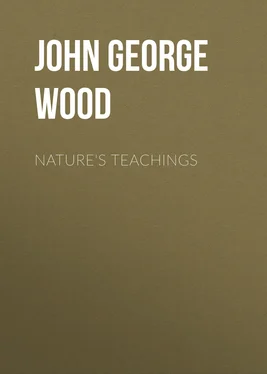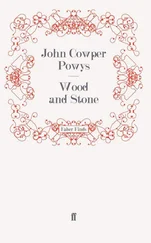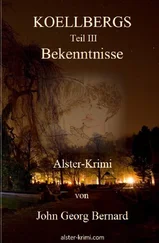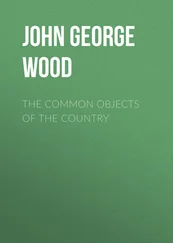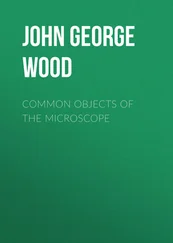John George Wood - Nature's Teachings
Здесь есть возможность читать онлайн «John George Wood - Nature's Teachings» — ознакомительный отрывок электронной книги совершенно бесплатно, а после прочтения отрывка купить полную версию. В некоторых случаях можно слушать аудио, скачать через торрент в формате fb2 и присутствует краткое содержание. Издательство: Иностранный паблик, Жанр: foreign_antique, Природа и животные, foreign_edu, на английском языке. Описание произведения, (предисловие) а так же отзывы посетителей доступны на портале библиотеки ЛибКат.
- Название:Nature's Teachings
- Автор:
- Издательство:Иностранный паблик
- Жанр:
- Год:неизвестен
- ISBN:нет данных
- Рейтинг книги:5 / 5. Голосов: 1
-
Избранное:Добавить в избранное
- Отзывы:
-
Ваша оценка:
- 100
- 1
- 2
- 3
- 4
- 5
Nature's Teachings: краткое содержание, описание и аннотация
Предлагаем к чтению аннотацию, описание, краткое содержание или предисловие (зависит от того, что написал сам автор книги «Nature's Teachings»). Если вы не нашли необходимую информацию о книге — напишите в комментариях, мы постараемся отыскать её.
Nature's Teachings — читать онлайн ознакомительный отрывок
Ниже представлен текст книги, разбитый по страницам. Система сохранения места последней прочитанной страницы, позволяет с удобством читать онлайн бесплатно книгу «Nature's Teachings», без необходимости каждый раз заново искать на чём Вы остановились. Поставьте закладку, и сможете в любой момент перейти на страницу, на которой закончили чтение.
Интервал:
Закладка:
The upper left-hand specimen is called Morgenstern, i.e. Morning Star. It is a large, heavy wooden ball studded with steel spikes, and affixed to a handle usually some six or seven feet, but sometimes exceeding eleven feet, in length. It was chiefly used by infantry when attacking cavalry, the long shaft enabling the foot-soldier to be tolerably sure of dealing the cavalier or his horse a severe blow, while himself out of reach of the latter’s sword.
Behind it is another Morgenstern in which there is an improvement, the armed ball being furnished at the end with a spike, so that it could be used either as a mace or a spear.
The commonest form of the Morning Star is shown below, and is thus described by Demmin:—
“This mace had generally a long handle, and its head bristled with wooden or iron points. It was common among the ancients, for many museums possess several fragments of these weapons belonging to the age of bronze.
“The Morning Star was very well known and much used in Germany and Switzerland. It received its name from the ominous jest of wishing the enemy ‘good morning’ with the Morning Star when they had been surprised in camp or city.
“This weapon became very popular on account of the facility and quickness with which it could be manufactured. The peasants made it easily with the trunk of a small shrub and a handful of large nails. It was also in great request during the wars of the peasantry which have devastated Germany at different times, and the Swiss arsenals possess great numbers of them.”
One of these primitive weapons may be seen in the lower figure of the illustration.
Sometimes the spiked ball was attached to a chain, and fastened to the end of a handle varying greatly in length, measuring from two to ten feet. One of these weapons may be seen in the Guildhall of London, being held by one of the celebrated giants.
If the reader will now turn to the illustration on page 53, he will see that on the right of the Durian there are two spherical objects covered with spikes. The upper is the pollen of the Hollyhock, and the lower the common Horse-chestnut. The reader will see that these are precisely similar in form to the spiked balls of the Morgenstern, whether they be used at the end of a staff or slung to a chain. There are many similar examples in the vegetable kingdom which will doubtless suggest themselves to the reader, but these are amply sufficient for this purpose.
Then, in the animal world, the curious Diodons, sometimes called Urchin-fishes, or Prickly Globe-fishes, are good examples. These fishes are covered with sharp spines, and, as they have the power of swelling their bodies into a globular form, the spikes project on all sides just like those of the pollen or chestnut. There is a specimen in my collection, which, if the tail and fins were removed, and a cast taken in metal, would make a very good Morgenstern ball.
The next improvement on the club was evidently to flatten it, and sharpen one or both edges, so as to make it a cutting as well as a stunning implement—in fact, the club was changed into a Sword.
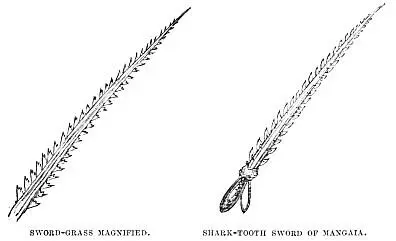
A good example of this weapon in its simplest form is the wooden sword of Australia, now an exceedingly rare weapon. It looks like a very large boomerang, but is nearly straight, and is made from the hard, tough wood of the gum-tree. Travellers say that the natives can cut off a man’s head with this very simple weapon.
I just missed obtaining one of these swords from a man-of-war, but, unfortunately, a few hours before my arrival the zealous first lieutenant had ordered a large collection of savage weapons to be thrown overboard, among which were several Australian swords.
Finding that the edges were not sufficiently sharp, and were liable to break, the maker next turned his attention to arming them with some substance harder than wood. Various materials were used for this purpose, some of which will be mentioned.
One of these is given in the illustration, and is taken from a specimen in my collection. It is made of wood, rather more than two feet in length, and would in itself be an insignificant weapon but for its armature.
This consists of a number of sharks’ teeth, which are fixed along either side, and are a most formidable apparatus, each tooth cutting like a lancet-blade, and not only being very sharp, but having their edges finely notched like the teeth of a saw. I have a series of these weapons in my collection, some being curved, some straight, and one very remarkable weapon having four blades, one straight and long blade in the centre, and three curved and short blades springing from the handle towards the point.
Opposite the shark-tooth sword is an object which might almost be taken for a similar weapon, but is, in fact, nothing but a common grass-blade, such as may be found in any of our lanes. I suppose that most of my readers must at some time have cut their fingers with grass, and the reason why is shown in the illustration, which represents a much-magnified blade of grass. The edges of the leaf are armed with sharp teeth of flint, set exactly like those of the sword, with their points directed towards the tip of the blade. The whole of the under surface of the blade is thickly set with similar but smaller teeth, arranged in the same manner. I have just brought a blade of grass from a lane near my house, and when it was placed under the half-inch power of the microscope, the resemblance to the sword was absolutely startling to some spectators who came to look at it.
As if to make the resemblance closer, many savage weapons are edged with flat stones, flint chips, or pieces of obsidian, so that the flint teeth of the grass are exactly copied by the flint edgings of the sword. The old Mexican swords were nearly all edged with obsidian, as is seen in the lower right-hand figure of the next illustration. I possess a number of obsidian flakes which were intended for that purpose, but do not appear to have been used.
The second figure from the top represents the head of a spear similarly armed, and I possess a small Australian implement in which the flakes of obsidian are set only on one side, so that the instrument can be used as a rude saw.
Between these two weapons is a spear-head armed with shark-teeth. I have a very remarkable weapon of this kind, made in Mangaia. It is eleven feet in length, and, besides being armed with a double row of sharks’ teeth nearly to the handle, it has three curved blades similarly armed, set at distances of about two feet, and projecting at right angles. Thus, if the foe were missed with the point of the spear, he would probably be wounded by one of the blades.

The upper figure represents a weapon where the natural bone of the sting-ray has been used as the point.
On the opposite side are seen three natural objects similarly armed. The uppermost is another species of sword-grass, like that which has already been described.
Next comes a magnified view of one of the three cutting instruments of the leech, showing the serrated teeth set along its edge, by means of which it produces the sharply-cut wounds through which it sucks the blood.
The last figure represents the head of the common Saw-fish, in which a vast number of flat and sharply-edged teeth are set upon the blade-like head. The fish has been observed to use this weapon just as the Mangaian uses his sword-spear. It dashes among a shoal of fish, sweeps its head violently backwards and forwards, and then, after they have dispersed, picks up at its leisure the dead and disabled.
Читать дальшеИнтервал:
Закладка:
Похожие книги на «Nature's Teachings»
Представляем Вашему вниманию похожие книги на «Nature's Teachings» списком для выбора. Мы отобрали схожую по названию и смыслу литературу в надежде предоставить читателям больше вариантов отыскать новые, интересные, ещё непрочитанные произведения.
Обсуждение, отзывы о книге «Nature's Teachings» и просто собственные мнения читателей. Оставьте ваши комментарии, напишите, что Вы думаете о произведении, его смысле или главных героях. Укажите что конкретно понравилось, а что нет, и почему Вы так считаете.
